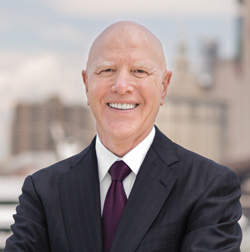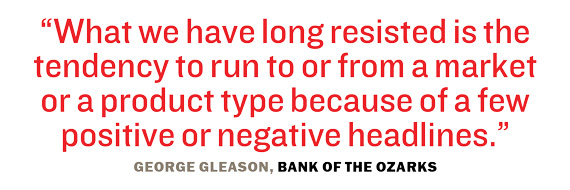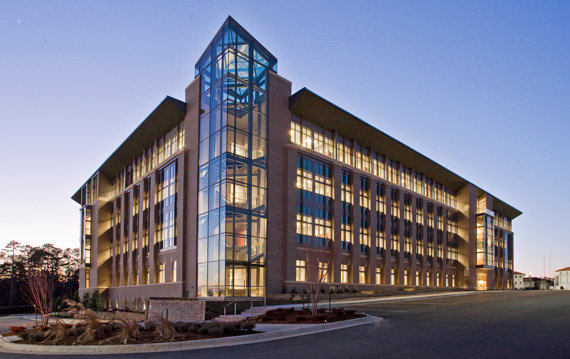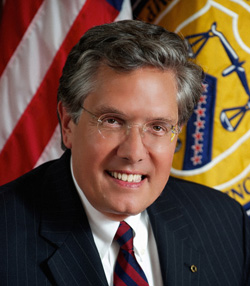Trending
The little bank that could
Arkansas’ Bank of the Ozarks has become one of New York’s most visible construction lenders and isn’t concerned about the risks

For the bulk of its 113-year history, Bank of the Ozarks was a small community lender with a few branches in Arkansas’ mountainous western region, from which it takes its name.
But since the bank entered the New York City arena in 2012, it has become one of the most active construction lenders throughout the boroughs. Now, with its biggest competitors pulling back from ground-up condominium, office and hotel projects in need of debt, a growing number of major real estate players have started to call on Bank of the Ozarks as a key source of financing.
Among those players are Tishman Speyer, which took a construction loan from the bank for an undisclosed amount for its $700 million office development in Long Island City; Gary Barnett’s Extell Development [TRDataCustom], which took a $55 million loan for his condo development at 350 East 86th Street; and Ashkenazy Acquisition, which took a $92 million loan for its $140 million purchase of the NYLO hotel on the Upper West Side.
Those deals — all of which closed in the past two months — have attracted a lot of media attention. But some question whether the publicly traded firm can continue its growth, or if it will fall victim to its own success.
From its corporate headquarters in Little Rock, Arkansas, via its real estate base in Dallas and its loan production office at the Helmsley Building in Midtown, Bank of the Ozarks has made a name for itself providing non-recourse loans with slightly higher interest rates at a time when such money is scarce. The bank’s total real estate loans in the city grew to $1.9 billion in the second quarter of 2016 from $1.6 billion at the end of 2015, while its construction loans swelled to $1 billion from $631 million in the same period.
“They’ve created a phenomenal niche for themselves,” said Adi Chugh, founder of the debt brokerage Maverick Capital Partners, who has brokered loans from the bank on behalf of borrowers. He noted, however, that with its non-recourse loans, the bank gives up a level of control and collateral should its borrowers default.

George Gleason
“They’re more expensive, but they’re taking on more risk,” Chugh said. “And as they’ve grown as a bank, their appetite for bigger loans has grown as well.”
For many in New York real estate, Bank of the Ozarks seemingly came from out of nowhere overnight, expanding rapidly in the wake of the Great Recession as it snatched up other financial institutions around the country. And as its desire for real estate exposure increases, the bank has been stringing together bigger and higher-profile deals.
The significance of those transactions has been highlighted by the growing silence among other banking institutions. Yet, at a time when many of the city’s construction lenders are hitting the breaks in a market they view as near or past its peak in the current cycle, Bank of the Ozarks’ chairman and CEO George Gleason told The Real Deal that the bank “doesn’t run with the herd.”
‘Wagging the dog’
On a July earnings call, Gleason said that he expects the bank’s commercial real estate lending volumes to “continue to increase significantly.”
Despite that growth, Bank of the Ozarks has taken further steps to take to become the biggest construction lender in the city. Another active lender, M&T Bank, for example, had a construction loan portfolio of $1.3 billion in New York City at the end of 2015, according to its annual report – $300 million more thank Bank of the Ozarks.
But with roughly $126 billion in total assets, Buffalo-based M&T is much larger than Bank of the Ozarks, which just passed the $16 billion mark in July with the completed acquisitions of two more banks: Community & Southern Holdings in Georgia and C1 Financial in Florida.
Now the Arkansas-based company’s outsized exposure to commercial real estate — and construction projects in particular — has some calling its growth unsustainable at best, and inadequately capitalized at worst.
In May, the short-seller Carson Block, who made a name for himself uncovering malfeasance at Chinese companies, advised investors to hedge their bets against the bank. Block, the founder of the investment research firm Muddy Waters, noted that Bank of the Ozarks has an extreme exposure to the market with 89 percent of its loans in real estate, and 35 percent on construction projects.
But the real cause for concern with the bank, Block said, was its unfunded loan commitments — in which the bank originates debt before it has the necessary assets to fulfill those loans, trusting that it can make acquisitions in time to keep pace. Bank of the Ozarks’ “tail wagging the dog” model, he said, left it with $6.38 billion worth of unfunded commitments as of December 2015.
 “The reality is that it’s a significant threat to the bank’s liquidity because these are liabilities for which the bank doesn’t yet have the assets,” Block told TRD. “We see Ozarks’ acquisitiveness as being driven by a need to buy deposits in order to fund these liabilities.”
“The reality is that it’s a significant threat to the bank’s liquidity because these are liabilities for which the bank doesn’t yet have the assets,” Block told TRD. “We see Ozarks’ acquisitiveness as being driven by a need to buy deposits in order to fund these liabilities.”
But Gleason said off-balance-sheet commitments are a result of the fact that borrowers on construction deals draw down on junior debt before they tap the senior bank loan, which could take up to a year, depending on the size of the project.
“That’s an absolutely ridiculous assertion,” he told TRD, noting that Bank of the Ozarks’ two latest acquisitions give it additional deposit capacity to fund its loan growth through 2020.
Opportunity knocks
When Bank of the Ozarks opened its first office in the city in 2012, it did so with one purpose: to break into the city’s construction lending scene.
During the 1990s, the bank expanded throughout Arkansas and into Texas, where it provided senior loans on construction projects that big institutional players, including Apollo Global Management and Fortress Investment Group, would originate mezzanine debt and preferred equity for.
Those connections, Gleason explained, led the bank to New York, where it has ambitious plans for growth.
“All markets ebb and flow, and a lender has to take that into account,” the bank’s CEO said. “But what we have long resisted is the tendency to run to or from a market or a product type because of a few positive or negative headlines. Many banks do just that, and the resulting herd mentality is bad for the industry and bad for the economy and [real estate] market.”
From its Midtown office, led by former Capital One executive Richard Smith, Bank of the Ozarks did its first New York construction deal in May 2013, lending hotelier Sam Chang $27 million for his 177-room Holiday Inn Express at 538 West 48th Street. At the time, the city was kicking off a hotel building boom amid a larger return to construction following the financial crisis, and the bank found a market originating medium-sized, non-recourse loans at more than 4 percent over the London Interbank Offered Rate.

The Helmsley Building at 230 Park Avenue
The bank’s second transaction in New York was a $6.7 million loan to the small Midtown-based firm Ascend Group for its gut-renovation of a five-story townhouse at 146 Waverly Place. Ascend bought the property for $10.2 million in October 2013 and sold it late last year for $23.3 million, city records show.
Low profile
More under-the-radar deals followed, including a $10 million acquisition loan to Centaur Properties for a development site at 526 West 28th Street and even a $12.3 million loan to Extell for a site at 568 Broome Street.
By March 2014, Bank of the Ozarks had $92.5 million of New York real estate loans on its books, and whether or not the company knew it then, it was about to get a break.
At the time, other banks such as M&T, Capital One and Santander were making partial-recourse loans, while high-octane debt funds and private equity shops were doing deals with interest rates as high as 10 percent. In between, Puerto Rico’s Doral Bank had carved out a niche for itself by making non-recourse loans, but regulators shut Doral down in February 2015 after years of mismanagement at the company.
Suddenly, there was a void in the non-recourse market, one that Bank of the Ozarks stepped into. And while the bank takes on greater risk with its loans, it protects itself by keeping its loan-to-value (LTV) ratios relatively low.
Back in 2009, the bank’s construction portfolio averaged an LTV of 59 percent. During the first quarter of 2016, that average was down to 44 percent. And Bank of the Ozarks came out of the Great Recession virtually unscathed. In the past 13 years, it has only written off two loans for a total loss of $10.4 million, according to the figures from the bank.
“Their position within the capital stack is incredibly conservative,” said Chris Peck, a managing director at the commercial brokerage HFF, who has negotiated a number of deals with Bank of the Ozarks.
Breakneck growth
Gleason, a 25-year-old attorney at the time, bought a controlling interest in the two-branch bank in 1979 — when it had a couple dozen employees and $28 million in assets — and took the company public in 1997. But the Arkansas native, who holds a bachelor’s degree from Hendrix College and a J.D. from the University of Arkansas, told TRD that he considers 2003 “the most important year in our history.”

Bank of the Ozarks’ corporate headquarters
in Little Rock, Arkansas
That’s when Bank of the Ozarks formed its real estate services group, a specialized team of attorneys and real estate professionals in Dallas who handle underwriting and oversight of all the company’s debt on ground-up development projects. Since then, the bank’s growth has been directly tied to its book of construction loans, along with its many acquisitions.
In 2010, Gleason and his top executives began to look for more accelerated means of growth, and with assistance from the Federal Deposit Insurance Corporation, began buying failed banks, expanding into Florida, Alabama, Georgia and the Carolinas through 2013.
Then Bank of the Ozarks started acquiring “live” banks, and in February 2015 paid $228.5 million to buy Intervest Bank, a lender with offices in Florida and New York City that had stayed out of construction lending altogether. That deal — the biggest acquisition for Bank of the Ozarks at the time — gave it an additional $1.2 billion in loans and $1.3 billion in deposits.
As he was preparing to close the deal, Gleason told investors last January that he had to be extra careful about markets like New York, where the property being developed, “particularly at the top end of that market seems a little bit unreal.”
The bigger they are…
Still, with 15 mergers and acquisitions under its belt since March 2010, Bank of the Ozarks shows no signs of slowing down. And the bigger it gets, the more scrutiny it may attract.
In December 2015, federal regulators — concerned about lax underwriting standards as commercial real estate loan portfolios continue to balloon this late in the cycle — announced that they would begin to step up oversight of the U.S. banking industry.

Thomas Curry
In July, Comptroller of the Currency Thomas Curry reiterated that point in a semi-annual report on financial risks. “Strong loan growth combined with easing underwriting to result in increased credit risk,” he wrote.
“While leveraged lending and auto lending remain concerns, CRE lending and concentration risk management has become an area of emphasis for regulators.”
Regulators’ guidelines consider banks with commercial real estate loans representing 300 percent of their total capital to be potentially exposed to significant risk. Bank of the Ozarks had a ratio north of 400 percent when it passed an exposure test last year, though regulators were apparently satisfied with its underwriting and oversight standards.
Now the bank is looking to push the envelope even further, and has set a goal of as much as 550 percent by next year. Brian Martin, an analyst who covers the bank for FIG Partners, said those ambitious growth projections are a double-edged sword.
“It shows you there’s a lot of runway,” he said, noting that a bump in the road could be a major headache for a lender with such ambitions. “Regulators aren’t going to let them go to this 550 percent level if something does blow up.”




